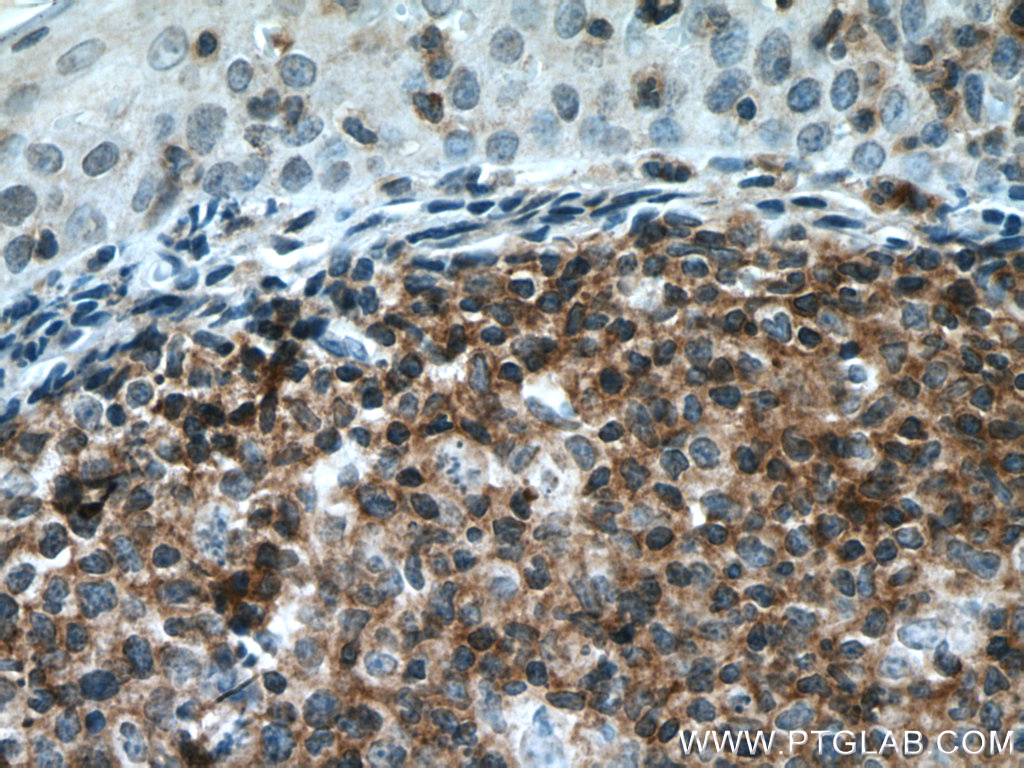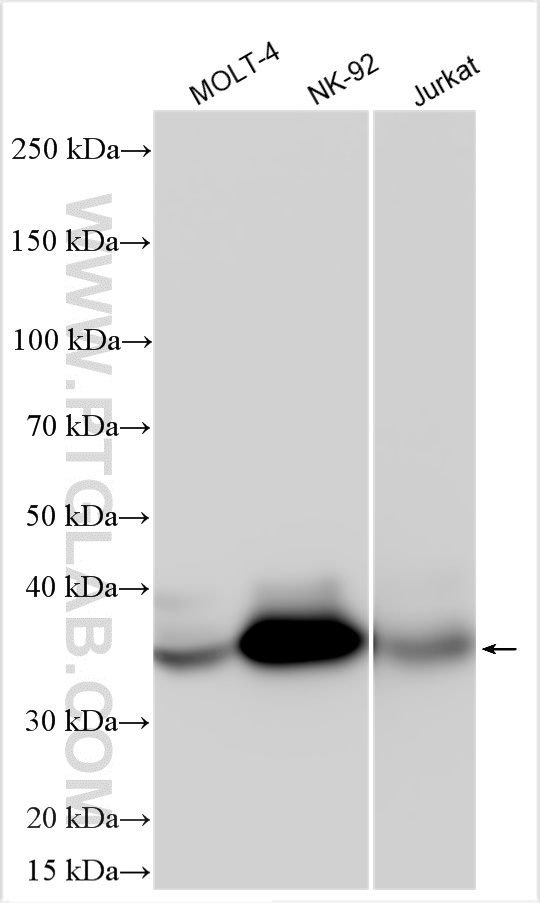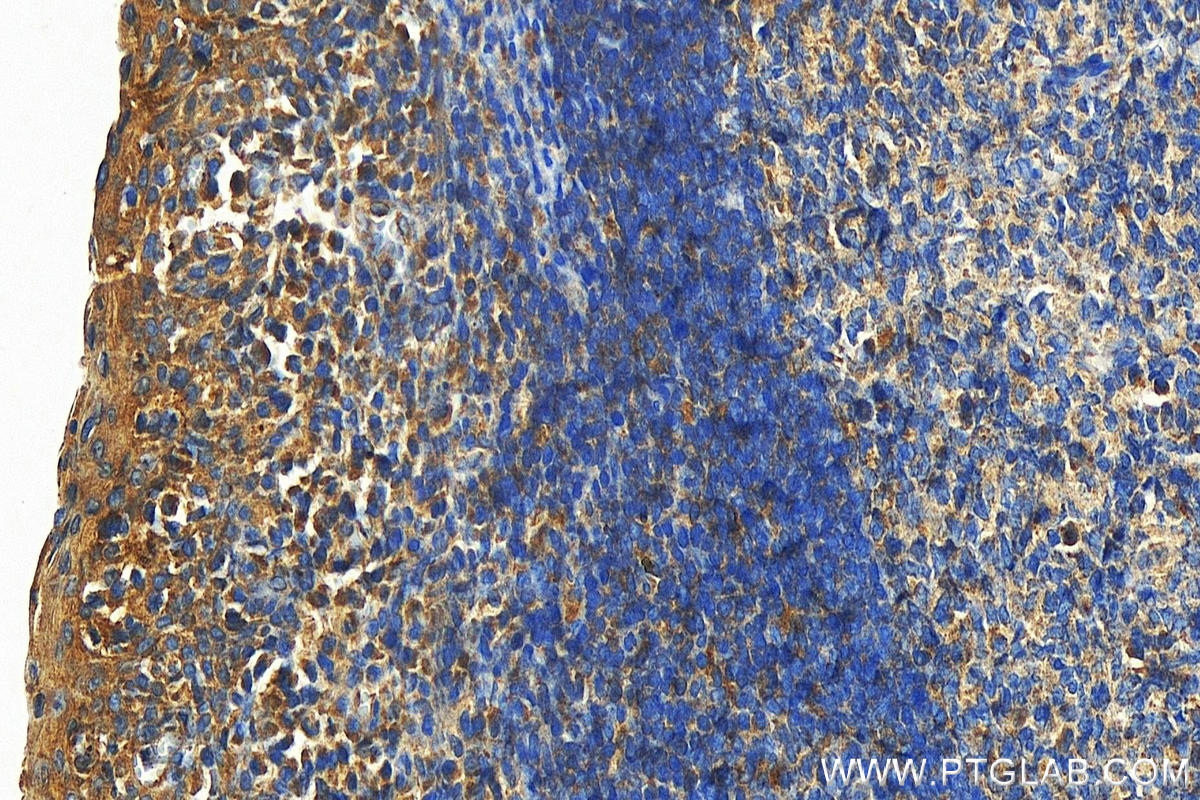验证数据展示
经过测试的应用
| Positive WB detected in | MOLT-4 cells, NK-92 cells, Jurkat cells |
| Positive IHC detected in | human tonsillitis tissue Note: suggested antigen retrieval with TE buffer pH 9.0; (*) Alternatively, antigen retrieval may be performed with citrate buffer pH 6.0 |
推荐稀释比
| 应用 | 推荐稀释比 |
|---|---|
| Western Blot (WB) | WB : 1:1000-1:4000 |
| Immunohistochemistry (IHC) | IHC : 1:50-1:500 |
| It is recommended that this reagent should be titrated in each testing system to obtain optimal results. | |
| Sample-dependent, Check data in validation data gallery. | |
产品信息
21448-1-AP targets PVRIG in WB, IHC, ELISA applications and shows reactivity with human samples.
| 经测试应用 | WB, IHC, ELISA Application Description |
| 经测试反应性 | human |
| 免疫原 | PVRIG fusion protein Ag13815 种属同源性预测 |
| 宿主/亚型 | Rabbit / IgG |
| 抗体类别 | Polyclonal |
| 产品类型 | Antibody |
| 全称 | poliovirus receptor related immunoglobulin domain containing |
| 别名 | Transmembrane protein PVRIG, Poliovirus receptor-related immunoglobulin domain-containing protein, CD112R, CD112 receptor, C7orf15 |
| 计算分子量 | 326 aa, 34 kDa |
| 观测分子量 | ~34 kDa |
| GenBank蛋白编号 | BC001129 |
| 基因名称 | PVRIG |
| Gene ID (NCBI) | 79037 |
| RRID | AB_2878859 |
| 偶联类型 | Unconjugated |
| 形式 | Liquid |
| 纯化方式 | Antigen affinity purification |
| UNIPROT ID | Q6DKI7 |
| 储存缓冲液 | PBS with 0.02% sodium azide and 50% glycerol , pH 7.3 |
| 储存条件 | Store at -20°C. Stable for one year after shipment. Aliquoting is unnecessary for -20oC storage. |
背景介绍
PVRIG, also named as CD112R and C7orf15, is an immune suppressive molecule expressed on T and NK cells. It's a cell surface receptor for NECTIN2. PVRIG is a target for the treatment of cancer.
实验方案
| Product Specific Protocols | |
|---|---|
| WB protocol for PVRIG antibody 21448-1-AP | Download protocol |
| IHC protocol for PVRIG antibody 21448-1-AP | Download protocol |
| Standard Protocols | |
|---|---|
| Click here to view our Standard Protocols |



